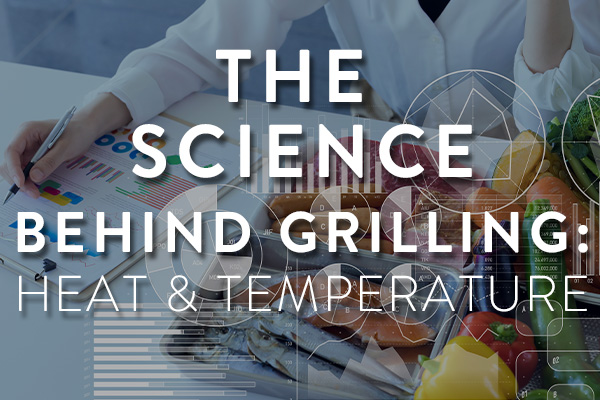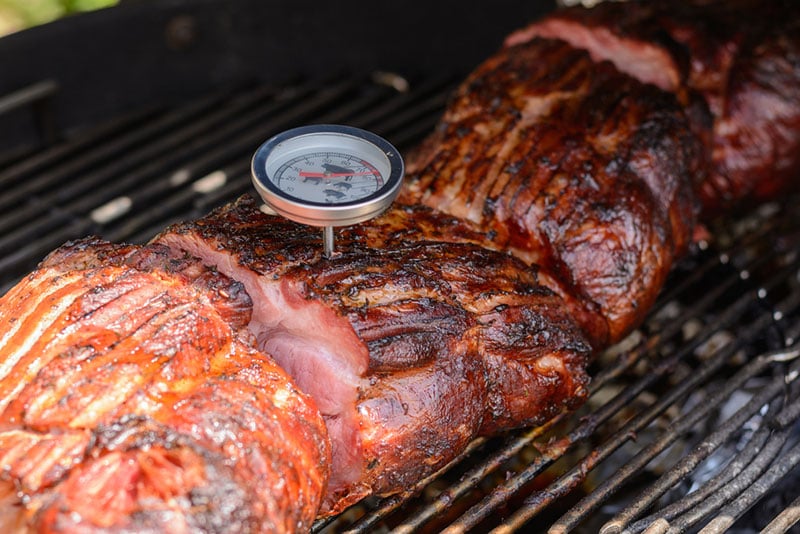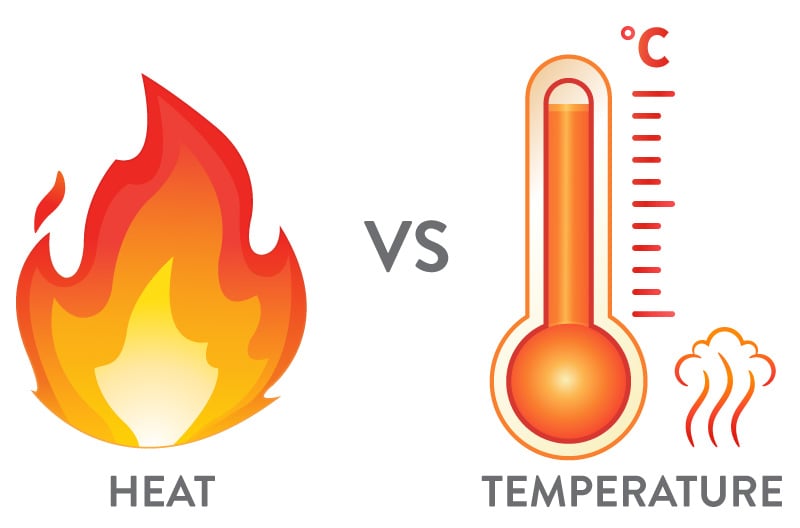
It’s late morning on a crisp Saturday, and you’ve just started preparations for a weekend barbecue. With the twist of a knob (or a match), fire leaps to life on your grill. Soon, heat builds up in the grill, and in a few minutes, it’s hot enough to cook. Then, you can throw on some steaks, hamburgers, or sausages. You’re well on your way to a delicious meal. But how does it all work? What makes heat work to cook our food and warm our homes? How do we know what the temperature the grill should be set on? To learn these things, we need to know what the terms “heat” and “temperature” really mean and how they differ.
Heat

We often think of heat as a state of being: Something is either hot or cold. Once the grill is ready, we may warn younger family members to avoid it because it’s hot. Later on, we may talk about the weather and the heat of summer. But despite how we talk about it, heat really describes an active process. Heat is the transfer of energy, and it always flows from a warmer object to a cooler object. That’s why when we shut down the grill, it gradually cools off: Heat energy is transferring from the hot grill to the cool air around it. This type of heat exchange is known as radiation, but there are other types. When heat transfers from one solid object to another (such as when someone touches a hot grill), that’s known as conduction. Inside of a hot object, the particles are moving faster than they are in a cold object; when these two objects touch, the faster particles bump into the slower ones, transferring their energy. Heat transferring through a liquid (such as hot water bubbling to the top of a boiling pot of water) is called convection. Heat energy can transfer differently in liquids depending on the density of the liquid.
Temperature

Temperature is the measure of how much heat energy an object contains on average. We tend to think of temperature as measuring how hot or cold something is. Temperature is often expressed in degrees, and the two most common temperature scales are Fahrenheit and Celsius. Daniel Fahrenheit invented his scale in 1724, and it’s primarily used in the United States. The Fahrenheit scale expresses water’s freezing point as 32 degrees and its boiling point as 212 degrees. When Anders Celsius developed his scale in 1742, he sset water’s freezing point at 0 degrees and its boiling point at 100 degrees. The Celsius scale was adopted by most countries along with the metric system. William Thomson published a paper describing a third scale, Kelvin, in 1848. Rather than measuring temperature in degrees, a unit called kelvins is used. Unlike Fahrenheit and Celsius, the Kelvin scale doesn’t revolve around water temperatures. Instead, 0 K is absolute zero, the complete lack of heat energy, the coldest anything can possibly be. The Kelvin scale is often used in engineering. To measure temperature, you usually use a thermometer. Traditional thermometers use a liquid (like alcohol or mercury) that expands as it heats up and contracts as it cools. The liquid is inside of a tube that’s marked with a temperature scale; as the liquid rises or falls, the number next to it shows the current temperature in degrees.
What Is the Difference?

Sometimes, people may talk about heat and temperature as if they’re the same thing. This is especially true when discussing the weather, as we complain about hot days in summer as having unbearable heat or skyrocketing temperatures. Of course, heat and temperature are closely related, but they’re not the same thing. As an object’s heat energy rises, its molecules vibrate more quickly. Its temperature rises too, so what’s the difference? Heat is energy that moves between objects. Temperature is a measurement that shows the average amount of heat energy in something. For example, a gallon of hot water has a certain amount of heat energy. If you fill a bathtub with 80 identical gallons of water, the tub will contain 80 times as much heat energy. The temperature, however, will remain the same. That’s because temperature represents an average, and each gallon of water contains the same amount of heat energy.
Resources
- What Is Heat?
- Heat Energy
- How Heat Energy Works
- Convection vs. Conduction
- What Is Temperature?
- Temperature Definition in Science
- Fahrenheit vs. Celsius
- How Does a Thermometer Work?
- Difference Between Heat and Temperature
- Physics Heat Quiz
- Heat and Temperature Quiz
- Heat Energy Word-O-Rama
- Teaching Thermal Energy With Heat Activities for Kids
- Warm Me Up! Lesson Activity
- Heat vs. Temperature Lesson Plan
